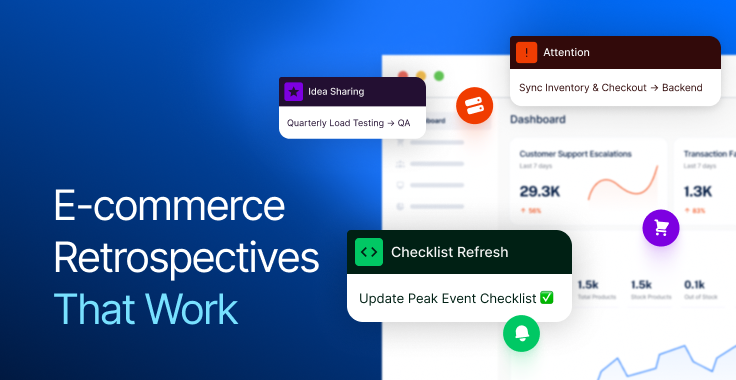Reasons for merchants to migrate to another platform might be different, but they all lead to one primary issue - you are not happy with the present solution. You might be on a platform that’s not synthesizing with the needs of your business or such software as Magento 1 which has met its end of life.
Magento and Shopify are two of the biggest platforms in the industry of eCommerce, therefore they are a pretty common migration choice. Although they both are extremely popular, there are differences you should be aware of and consider before making the migration decision.
Magento
First released in 2008 it is a self-hosted open-source eCommerce platform written in PHP. Magento is currently owned by Adobe and loved by many big brands. The open-source guarantees its users full control over the shopping cart, functionalities, and look & feel of the website. Such flexibility allows merchants to customize the website however they want so it perfectly matches the needs of the business. Furthermore, in case of such circumstances when your website is down, your partner agency can take immediate action - which is an important factor for huge enterprises.
Shopify
Founders of Shopify created software to fix their problem - there was no decent platform that would suit the needs of the eCommerce they wanted to launch. Firstly it was released 15 years ago and currently, it’s one of the most popular choices for merchants. Shopify has gained its popularity because of its ease of use - even people with no high technical or design knowledge can launch their store just in a few days. The platform is a SaaS solution that guarantees automatic platform updates for its users.
Costs
There is no fixed price for migration or further support, the price is dependent on many factors including your business needs, short and long term goals, and the size of your store.
When migrating to Magento 2 there are three options - Open Source, Commerce or Adobe Commerce Cloud. The first one, also known as the Open Source Community Edition, is free of charge - the license, download, and further usage. The second option - Magento Commerce Enterprise Edition, usually chosen by large eCommerce stores, licensing will cost you starting from USD 22 000 annually determined for each store by different factors (region, turnover, average order value, etc).
Secondly, you’ll have to migrate data - it is very important to find a trustworthy agency to do that to avoid data mismanagement. When it comes to extensions, there are few things to remember - firstly, if you are migrating from Magento 1, your old extensions won’t work with Magento 2 because of the code differences. The good news is, there are plenty of good extensions for Magento 2, so this should not be a problem. Additionally, extensions created by a third-party can be re-created on Magento 2, but the more complex the extensions are, the higher the cost will be. Since Magento 1 themes have completely different code structures, you’ll have to find or create a new theme.
In the case of migrating to Shopify, each case is unique as well. Same as for migrating to Magento, it is advised to find an expert agency that will guarantee you a safe migration and maintainable base for the long run. Additionally, regarding the data, go through your existing data and reconsider what needs to be migrated and what not - by doing so you’ll save money and time. Fee for the platform is monthly and it depends on what plan you choose, as seen below.

Source: https://www.shopify.com/pricing The price changes with the number of locations, staff accounts and features. However, it’s just the fee of the platform. You’ll have to pay a fee for each purchase (including returned orders) as well. The rates depend on the plan you choose, see below. Furthermore, if you are not using Shopify Payments as your payment gateway, you’ll have another fee to pay. The main issue with Shopify Payment is that it is not available in as many countries as we wish.

Source: https://www.shopify.com/pricing There are plenty of free Shopify themes, however there is always an option to purchase one or reach out to a professional agency to create a personalized theme that matches your business needs perfectly. The price highly depends on what your requirements are.
Limitations
Regarding the limitations, both of the platforms have some. It’s important to understand whether these disadvantages are crucial for you are not. While Magento’s structure is to provide a truly flexible platform with very little limitations that can be bypassed with custom development, in case of Shopify there are limitations that can’t be bypassed as it’s a SaaS solution, not an open-source where you have full access to the code.
As mentioned above, Shopify is a SaaS solution which comes with a huge disadvantage - you can’t get immediate help when your site is down and you might have to wait for hours to get the help (this has happened in the past). For large enterprises, such a scenario is not acceptable. When migrating to Shopify, only such data as products and customers can be imported by CSV files, meaning that the rest of information will be nothing but manual copy-paste from your old website to the new one. It’s hard to customize Shopify and some of your wishes might not come true. If you are planning to sell products that come in different sizes, colors and patterns you might go over the default Shopify limit of 100 variants and you only have a limit of three options per product. Although there are apps that can solve this issue, adding layers of programming comes with its downsides and the apps won’t adjust the admin panel meaning that you won’t be able to modify the order, product or customer grid.
Another thing to consider are the limitations of the checkout - you can’t make a single page checkout. Additionally products can be purchased only in websites native currency - you can show your customers how much the product costs in other currencies, but as soon as they go to the checkout they’ll have to do a transaction in your currency. While wholesale options are possible by creating another store, using a wholesale app or generating discount codes the methods come with a list of disadvantages - from having to pay for another Shopify website to possibility to use just one discount code. All the limitations above lead to a conclusion, that Shopify is not the most flexible platform out here, however it’s an excellent solution for websites with simple functionality.
Magento means flexibility, accordingly, if compared to Shopify its limitations usually are caused by lack of experience or knowledge. The platform itself might be pretty complicated to someone who doesn’t have the appropriate technical skills. However, if you find a trustworthy agency, most of your wildest dreams can come true.
SEO
The better your SEO the more website visitors you’ll get which consequently leads to more sales and increased revenue. Both Shopify and Magento offer you SEO features depending on your needs and expectations.
Most of the Shopify SEO configurations are easy to implement, which makes it easy for not the tech-savvy ones. Additionally, there is a wide range of SEO apps that can improve your organic search presence. However, most of the fully-featured apps will be pretty costly. Additionally, you won’t be able to change the CMS page links - they always have the same prefix. Categories of the website always start with /collections/ in the url and you can’t have a nested category tree.
Professionals and those who expect more will find Magento much better. Same as with Shopify, most of the best apps will be quite costly, however the costs won’t be monthly as they are with Shopify. Despite the costs, Magento offers you great personalization options even for SEO, so the only limit is the limit of knowledge.
Conclusion
Both of the platforms are amazing in their own way - Shopify is a great choice for a simple eCommerce that doesn’t require much of customization and has low entry costs, while Magento will be a perfect match for merchants who desire personalized solutions. If you are in doubt about which platform would be the best choice, email us right away to info@magebit.com for personalized consultation and best migration plan.


















